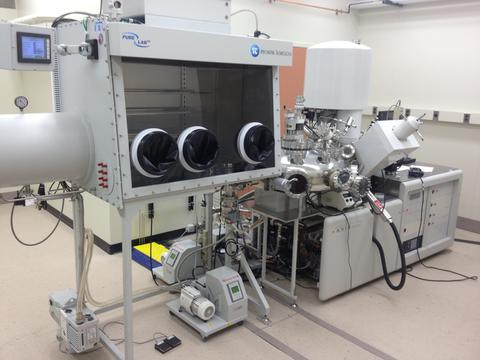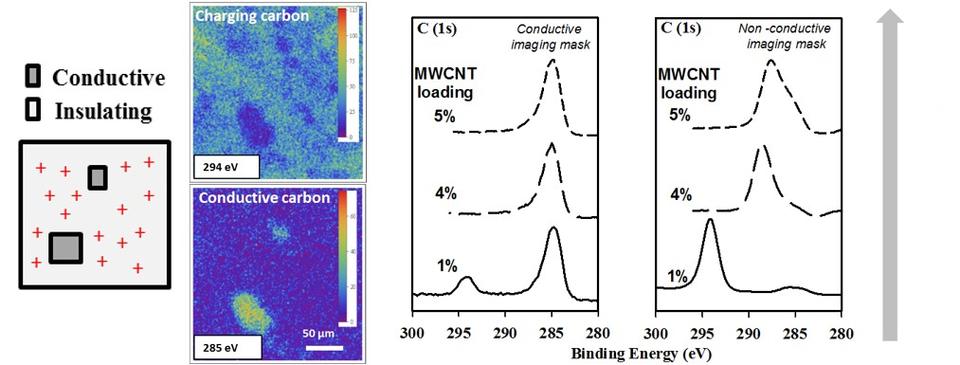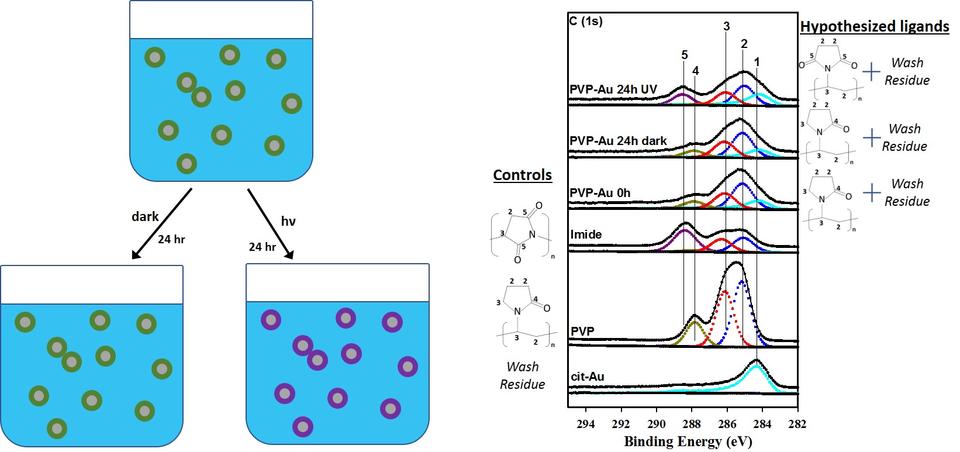X-ray Photoelectron Spectroscopy

Axis Ultra DLD X-ray photoelectron Spectrometer
Credit:
Justin Gorham/NIST
The Material Measurement Science Division at NIST performs surface chemical analysis using X-ray Photoelectron Spectroscopy (XPS) with capabilities for routine spectroscopy, imaging, depth profiling, angle resolved measurements and more. The POC for the XPS is Justin Gorham in the Nano Materials Research Group.
Notable Applications
Distinguishing carbonaceous materials through differential charging and XPS imaging

Credit:
Justin M Gorham
Gorham, Osborn, et al. Carbon 2016
Ligand photo-transformations identified using high resolution XPS spectroscopy

Credit:
Justin M Gorham
Specifications/Capabilities
- 4 distinct x-ray sources:
- Monochromatic Al Kα / Ag Lα
- Mg Kα and Al Kα flood sources (not monochromated)
- Surface spectroscopy
- Small area spectra down to nominally 15 micrometers
- Energy resolution down to nominally 0.1 eV.
- XPS imaging capable.
- Three field of views from (200 x 200) μm to (800 x 800) μm with (256 x 256) pixels
- Optimized spot size at approximately 3 μm
- Movement on 5 axis
- Mechanically translates in X, Y, and Z as well as tilting for angle resolved measurement
- Comes with an azimuthal stage for rotation.
- Ion gun ready
- Argon ion cleaning
- Depth profiling
- Ion selective spectroscopy for topmost layer elemental analysis.
Created February 15, 2018, Updated September 15, 2025

